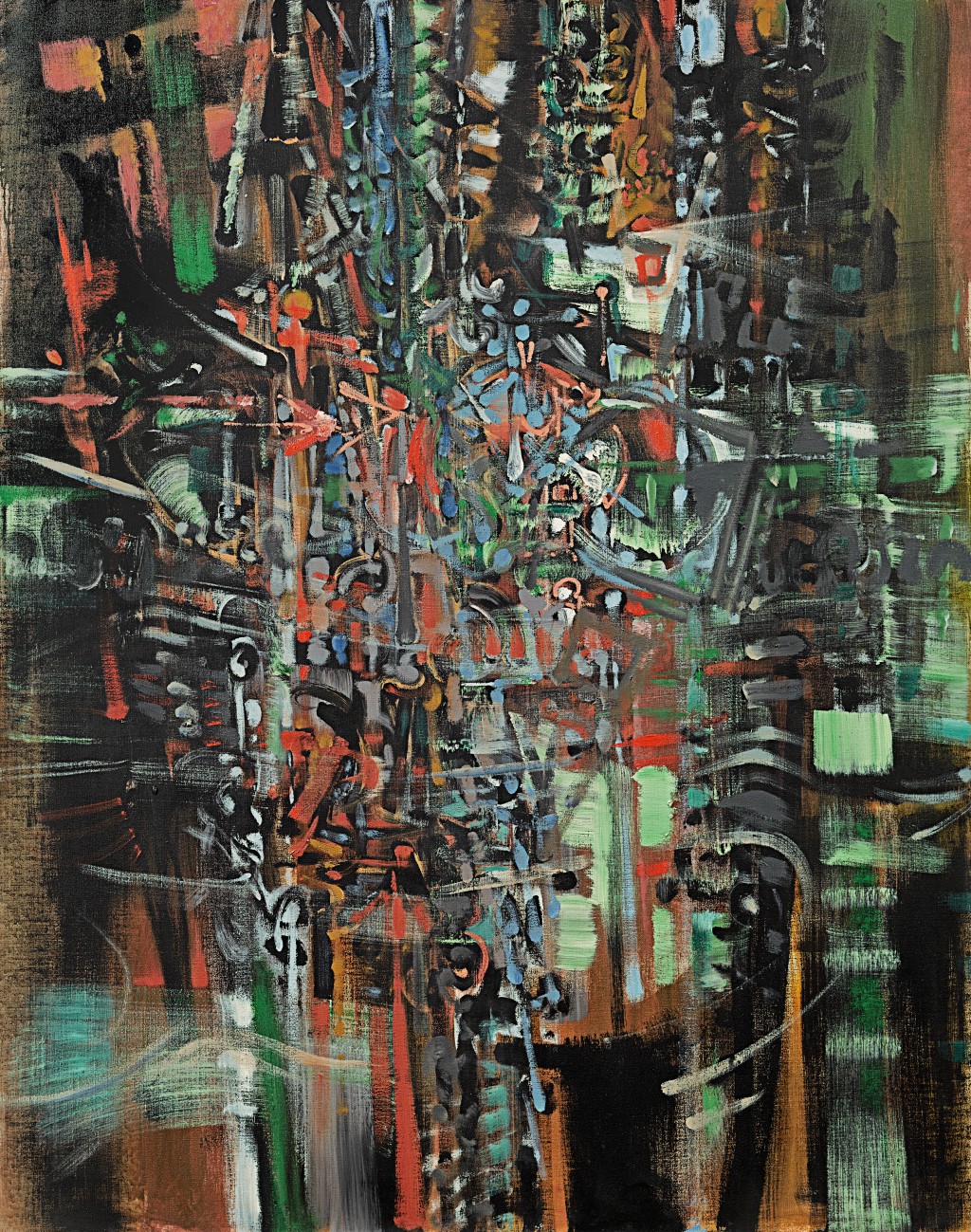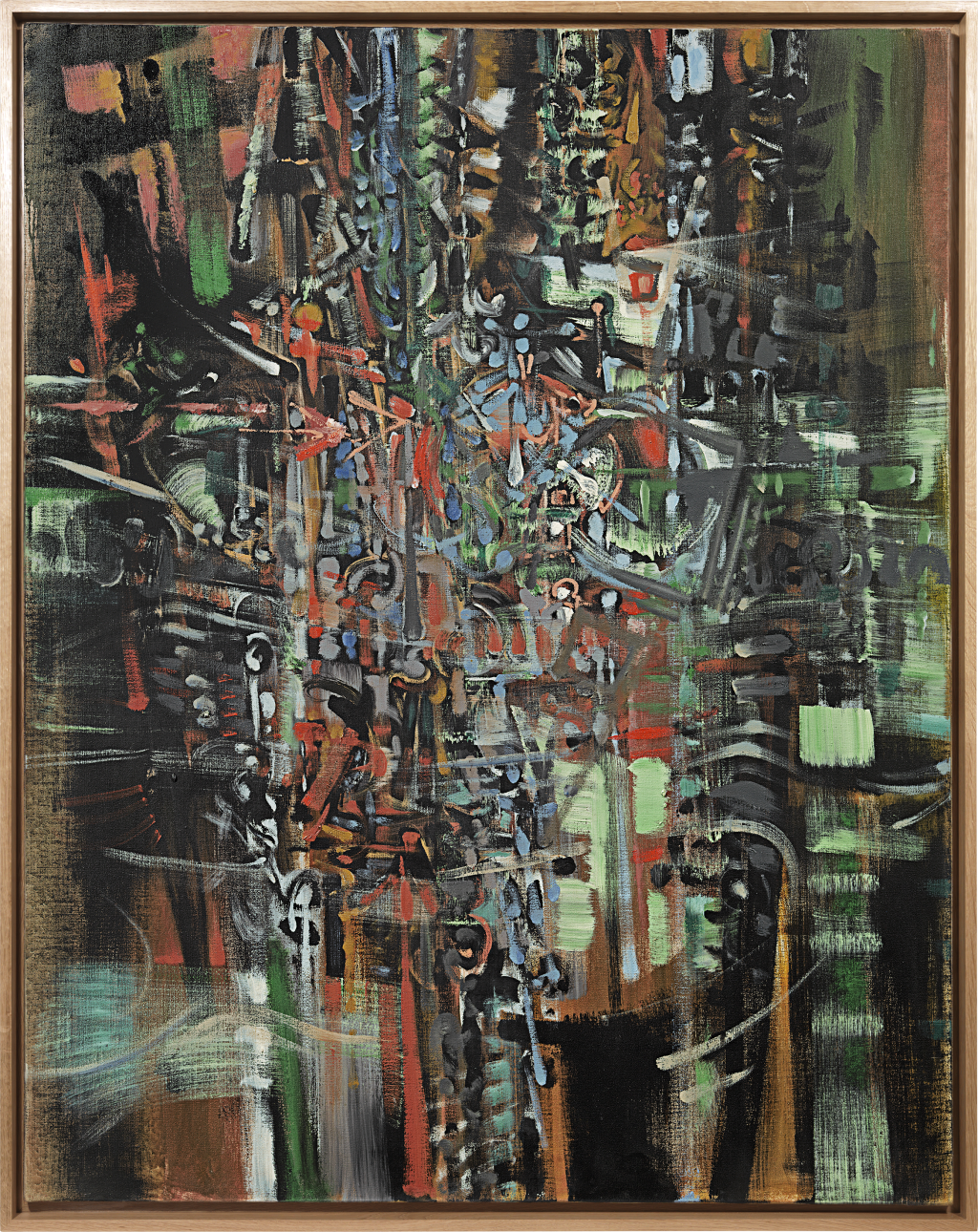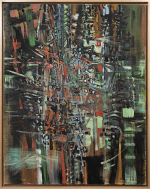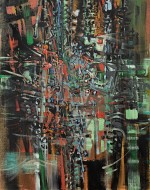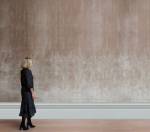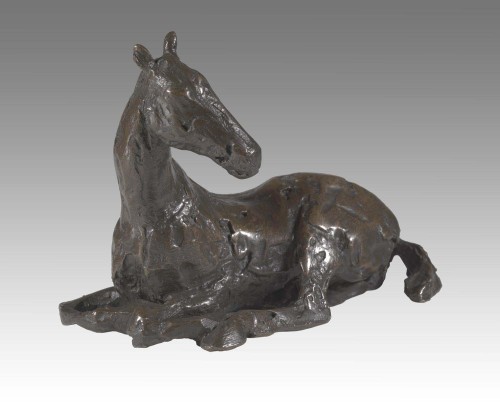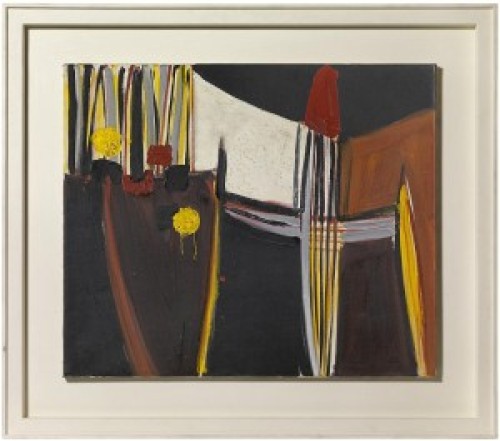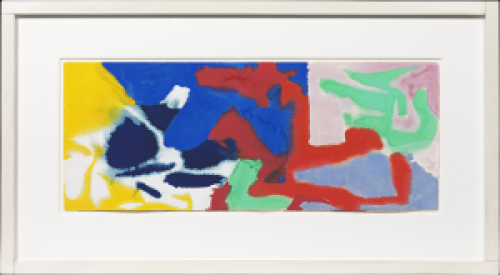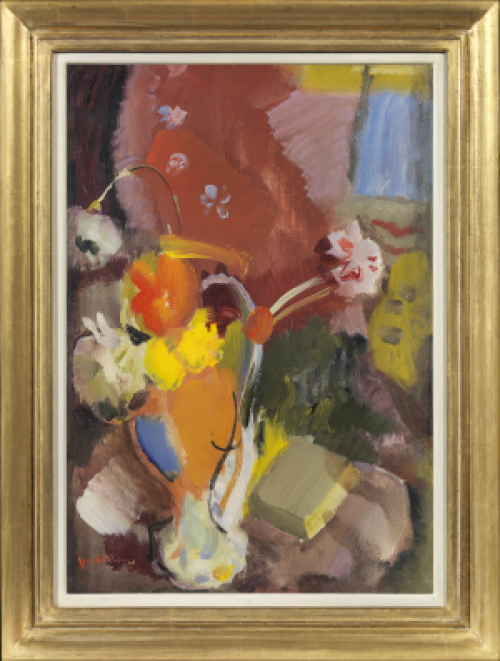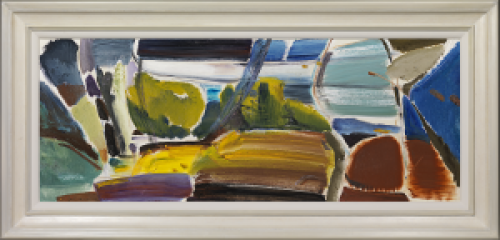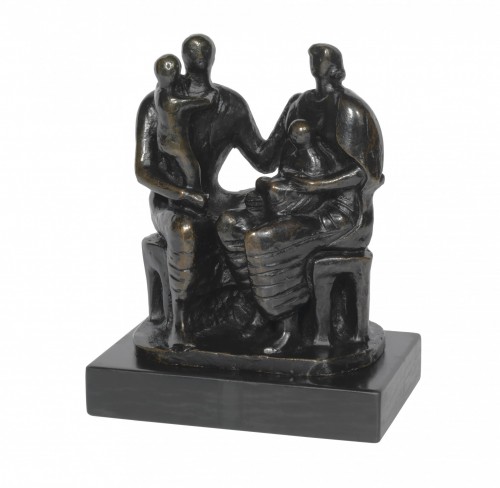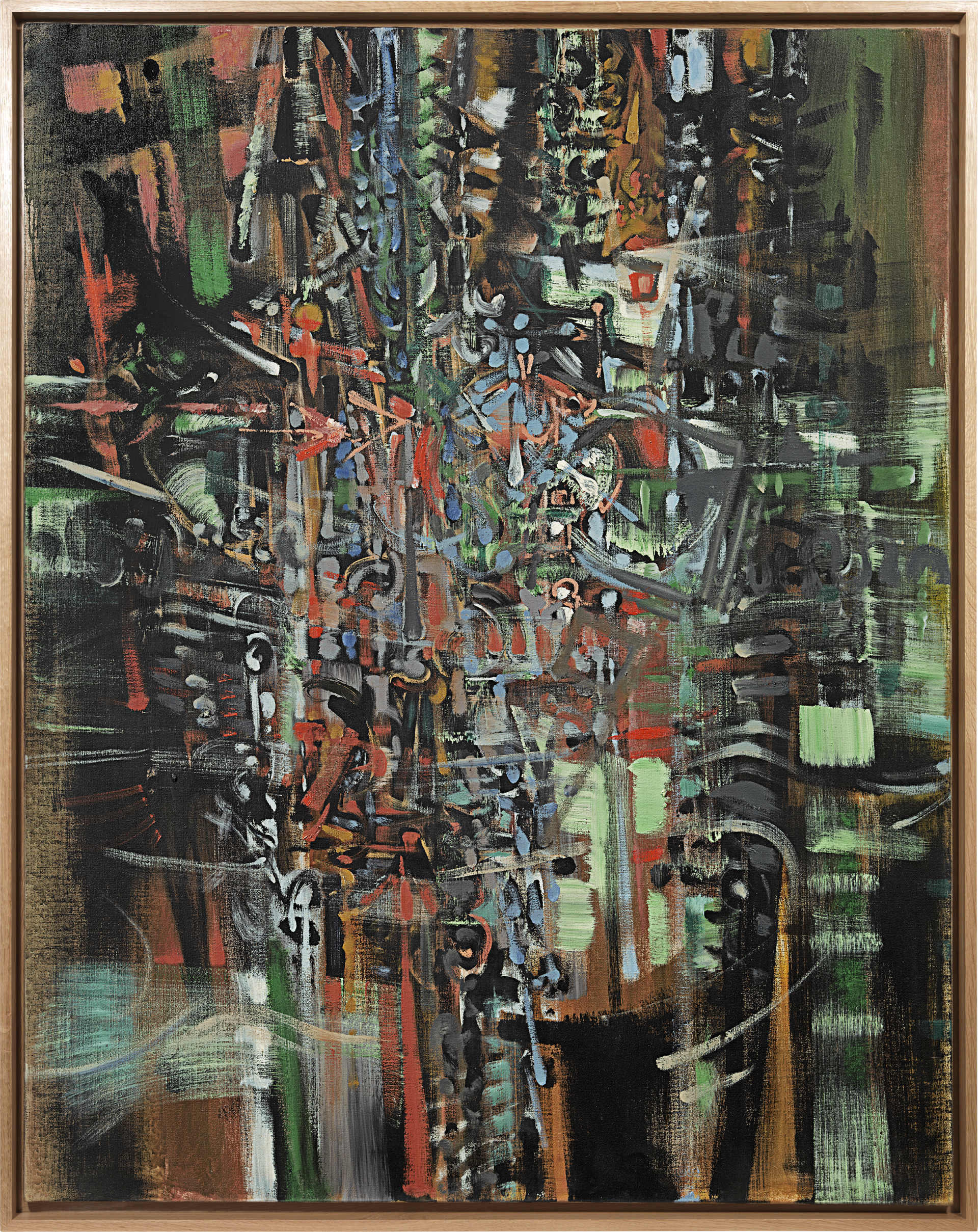BRYAN WYNTER
London 1915 - 1975 Penzance
Ref: CC 108
Meeting place
Signed and inscribed on the reverse: BRYAN WYNTER / ‘MEETING PLACE’ / Oil
Oil on canvas: 56 x 44 in / 142.2 x 111.8 cm
Frame size: 58 x 46 in / 147.3 x 116.8 cm
In an oak, wax-polished tray frame
Painted in 1957
Provenance:
The Museum of Modern Art, New York [617.59] acquired from/through the British Council, Fine Arts Department, London in 1959 with the G David Thompson Fund
Exhibited:
New York, The Museum of Modern Art, Recent Acquisitions, 3rd December 1959-31st January 1960, no.655
New York, Guest House, 16th November–25th January 1962
Literature:
Alfred H Barr Jr (ed.), Painting and Sculpture in the Museum of Modern Art: 1929-1967, The Museum of Modern Art, New York 1977, p.598, illus. p.348
The Bulletin of the Museum of Modern Art, New York, vol.27, no.3/4, ‘Painting and sculpture acquisitions’, January 1, 1959 through December 31, 1959 (1960), p.39, illus. p.27
Chris Stephens, Bryan Wynter, St Ives Artists, Tate Gallery Publishing, London 1999, p.7, illus. in colour fig.2
Michael Bird, Bryan Wynter, Lund Humphries, Farnham 2010, no.96, pp.108-9, 112, 123, illus. in colour p.109
In 1956, Bryan Wynter described his desire to make paintings ‘with as little conscious interference as possible, allowing them at every stage in their growth to dictate their own necessities.’ Long before his breakthrough early that year into a fully intuitive, improvisatory abstract practice, Wynter believed that the unconscious projects itself on to (or discovers itself in) the external landscape. His first, exhilarating encounter with American abstract expressionism at the Tate in January felt like decisive confirmation that, in its interplay of mind and body, the act of painting can summon up realities inaccessible to rational observation. Mescalin played its part; Wynter was an occasional, determinedly self-experimental user, but, aside from his studio playlist of new American jazz releases, he painted sober.
Meeting place came out of this intensely productive phase of Wynter’s career, at a point when several strands in his thinking and experience seemed suddenly to converge. Though he worked for months at a time in a rented London studio, his new paintings related intimately to his exploration of the granite uplands and marine environment around his Cornish studio–home (captivated by Jacques Cousteau’s 1956 underwater film The Silent World, he constructed his own aqualung). Among other influences were his fascination with the immersive movie phenomenon of Cinerama, first seen in London in 1954, with its multiple projectors and vast, curved screen, and his pursuit of close-up landscape photography.
Often the titles of Wynter’s paintings from 1956–57, co-authored with his young wife Monica, evoke journeys through and into the natural environment: Impenetrable country, Forest journey, Thicket, Deep current, Unsettled country. And Meeting place, in which the earthy depths (Wynter often started with a dark ground) seem at once to advance and recede, while the central columnar force-field of swarming, glyph-like brushmarks both invites and deflects the gaze. He was, he explained, ‘trying to create a kind of visual flux, a surface on which the eye found it difficult to rest…so that it would be compelled to push deeper and come to terms with the forces underlying the painting.’
Michael Bird, author of Bryan Wynter (Lund Humphries, 2010) and The St Ives Artists: A Biography of Place and Time (Lund Humphries, 2nd edition 2016).


